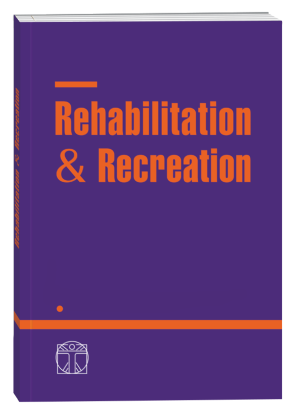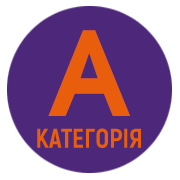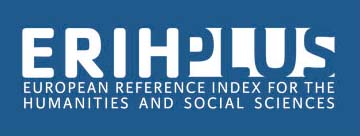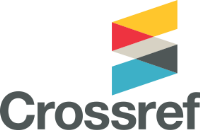PREDICTION OF SPORTS RESULTS IN YOUNG SWIMMERS
DOI:
https://doi.org/10.32782/2522-1795.2024.18.4.14Keywords:
forecasting, sports result, morphological and functional indicators, hydrodynamic qualities, level of biological maturing of an organismAbstract
Background and Study Aim. Study of stability of results of the morphofunctional condition, physical fitness and competitive activity is the main predictor of an athlete’s individual development: if these indicators are stable, then the development can be predicted the prediction will be inaccurate due to the high variability of the results of multi-year observations. This will allow to determine the potential movement capabilities of those who are engaged, this will make it possible to more rationally plan the volume of training loads in the annual training cycle, choose adequate training means. The aim of the study – to determine the criteria for predicting sports results in freestyle swimming at a distance of 100 m in young swimmers aged 16 years. Material and Methods. 35 young swimmers aged 10–16 years took part in the research. The research was conducted in the sports complex of Lutsk National Technical University (LNTU) in April 2024. The following methods were used in the work: theoretical analysis of literary data, methods of determining the morphofunctional state, methods of identifying hydrodynamic qualities, methods of determining the biological maturation of an organism; pedagogical control tests (swimming distances – 25 m, 50 m, 100 m, 200 m freestyle); methods of mathematical statistics. Results. The stablest indicators are the body length, length of a foot, a hand and foot. During all analyzed age periods the reliable interrelation between length of sliding and the maximum speed of swimming which considerably increases with age is revealed. Initial sports results with different level of maturing of an organism make unequal impact on sporting achievements of young swimmers at the age of 16 years at various distances. In process of increase in length of a distance stability of indicators of competitive activity increases. During predicting sports results in freestyle swimming at the age of 16, the initial results, the rates of their growth during the period of the first two years of training, the level of biological development of young swimmers were taken into account. Conclusions. The presented materials can be used for forecasting of expected development of physical readiness of young swimmers.
References
1. Berezhnaya-Pritula, M., & Ivanskaya E. (2017). Ozdorovche plavannia yak optymalnyi zasib dlia pokrashchennia fizychnoho stanu studentok 18–19 rokiv [Dynamics of the functional readiness of students aged 18–19 during systematic recreational swimming lessons]. Physical culture, sport and healthy nation, 3(22), pp. 15–18 [in Ukrainian].
2. Bergamin, M. (2013). Water-versus landbased exercise in elderly subjects: effects on physical performance and body composition. Clin. Interv. Aging, 8, pp. 1109–1117. https//doi.org/10.2147/CIA.S44198.
3. Callaway, A.J. (2015). Measuring kinematic variables in front crawl swimming using accelerometers: a validation study. Sensors, 15, pp. 11363−11386. https://doi.org/10.3390/s150511363.
4. Ceseracciu, E., Sawacha, Z., Fantozzi, S., Cortesi, M., Gatta, G., Corazza, S., & Cobelli, C. (2011). Markerless analysis of front crawl swimming. Journal of Biomechanics,44, pp. 2236–2242. https://doi.org/10.1016/j.jbiomech.2011.06.003.
5. Chaplinskyy, M., Briskin, Y., Ostrovska, N., Sydorko, O., Ostrovskyy, M., Pityn, M., & Polehoiko, M. (2018). Evaluation of the training level of water polo swimming players (13–15 years old). Journal of Physical Education and Sport, 18(1), pp. 356–362. https://doi.org/10.7752/Jрез.2018.з148.
6. Hlukhov, I.H. (2021). Zminy psykhofiziolohichnykh pokaznykiv studentiv za pidsumkamy realizatsii indyvidualnomotyvatsiinykh rivniv systemy navchannia plavannia [Changes in indicators of physical fitness of female students based on the results of the implementation of individual-motivational levels of the swimming training system]. Bulletin of Kamianets-Podilskyi Ivan Ohiienko National University. Physical education, sports and human health, 22, pp. 29–38. https://doi.org/10.31392/NPU-nc.series15.2021.8(139).07 [in Ukrainian].
7. Hlukhov, I.H. (2021). Substantiation of the swimming training system for students of higher education institutions. Visnik Kam’yanets-Podilskoho natsionalnoho universitetu imeni Ivana Ohiyenka. Fizichne vikhovannya, sport i zdorov’ya lyudini, 20, pp. 34–41. https://doi.org/10.31392/NPU-nc.series15.2021.7(138).08.
8. Hruzevych, I., Bohuslavska, V., Kropta, R., Galan, Y., Nakonechnyi, I., & Pityn, M. (2017). The effectiveness of the endogenous-hypoxic breathing in the physical training of skilled swimmers. Journal of Physical Education and Sport, 7(3), pp. 1009–1016. https://doi.org/10.7752/jpes.2017.s3155.
9. Ivanenko, S., Tyshchenko, V., Pityn, M., Hlukhov, I., Drobot, K., Dyadechko, I., Zhuravlоv, I., Omelianenko, H., & Sokolova, O. (2020). Analysis of the indicators of athletes at leading sports schools in swimming. Journal of Physical Education and Sport, 20(4), pp. 1721–1726. https://doi.org/10.7752/jpes.2020.04233.
10. Crook, A. (2017). Increasing the level of physical development of children of primary school age by means of recreational swimming. Physical culture, sport and health of the nation, 3(22), pp. 109–115.
11. Khalyand, R.B. (2011). Models of swimming techniques, starts and turns to improve the technical training of swimmers. Physical development and sports training of the future specialist, pp. 197–200.
12. Linets, M., Nazarkevich, L. (2017). Physical training of children of younger preschool age in recreational swimming classes using mobile games in water. Health and Sport: science, 1(27), pp. 32–44.
13. Monteiro, G., Araújo, N., Mazzardo, T., Francisco, P., Ribas, S. & Aburachid, L. (2021). Practice schedule analysis and pedagogical feedback in swimming classes. Journal of Physical Education and Sport, 21(3), pp. 1950–1957. https://doi.org/10.7752/jpes.2021.s3248.
14. Monteiro, A.S., Carvalho, D.D., Elói, A., Silva, F., Vilas-Boas, J.P., Buzzachera, C.F., & Fernandes, R.J. (2022). Repeatability of ventilatory, metabolic and biomechanical responses to an intermittent incremental swimming protocol. Physiological Measurement, 43(7), pp. 1–11. https://doi.org/10.1088/1361-6579/ac7c51.
15. Mykhaliuk, Y., & Horokhovskyi, Y. (2022). Effect of the training process of high-class and elite sprint swimmers of both genders on the state of the autonomic nervous system, central hemodynamics and physical working capacity. Physical rehabilitation and recreational health technologies, 7(4), pp. 163–170. doi: 10.15391/prrht.2022-7(4).27.
16. Roj, K., Planinšec, J., & Schmidt, M. (2016). Effect of Swimming Activities on the Development of Swimming Skills in Student with Physical Disability – Case Study. The New Educational Review, 46(4), pp. 221–230. https://doi.org/10.15804/tner.2016.46.4.19.
17. Pang, J. (2022). Influence of high-intensity exercise on physical fitness of swimmers. Revista Brasileira de Medicina do Esporte, p. 29. DOI: 10.1590/1517-8692202329012022_0491.
18. Pavlyashyk, V. (2017). Swimming as an effective means of youth recreation. Physical culture, sport and health of the nation, 3(22), pp. 377–379.
19. Santhiago, V,. Da Silva, A.S., Papoti, M. & Gobatto, C.A. (2011). Effects of 14-week swimming training program on the psychological, hormonal, and physiological parameters of elite women athletes. Journal Strength Condition Research, 25(3), pp. 825–832. https://doi.org/10.1519/JSC.0b013e3181c69996.
20. Stepanova, N. (2017). Methods of strength development in the process of training swimmers 14–15 years old. Physical culture, sport and healthy nation, 3(22), pp. 438–441.
21. Tanaka, H. (2009). Swimming exercise: impact of aquatic exercise on cardiovascular health. Sports Medicine, 39, pp. 377–387. https://doi.org/10.2165/00007256-200939050-00004.
22. Yachnyuk, M.Yu., Yachnyuk, I.O. & Yachnyuk, Yu.B. (2020). Swimming with teaching methods: teaching and methodical manual. P. 216.
Downloads
Published
How to Cite
Issue
Section
License

This work is licensed under a Creative Commons Attribution-NonCommercial-NoDerivatives 4.0 International License.












